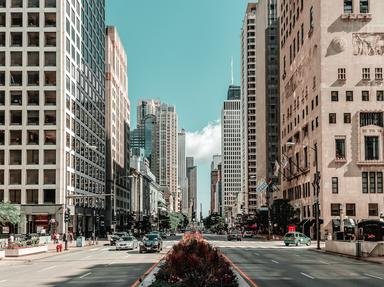
State by State: US Capitals Versus Largest Cities Quiz
America is unusual in that most state capitals are not the largest city in their respective states. From the following twelve well-known cities, you need to sort them into capital city, largest city or both, for the state in which they're located.
A classification quiz
by 1nn1.
Estimated time: 3 mins.
- Home
- »
- Quizzes
- »
- Geography Trivia
- »
- USA
- »
- USA - Cities